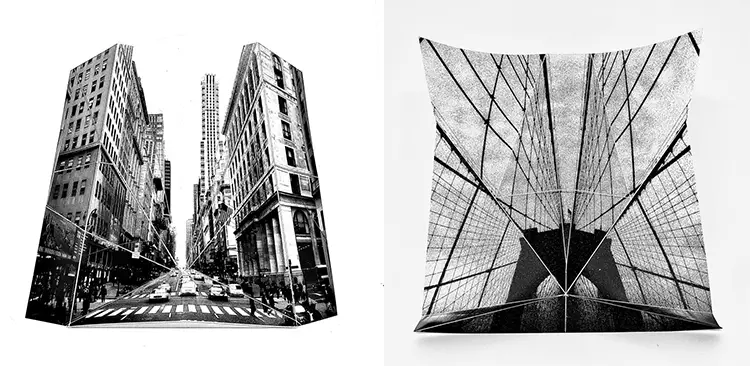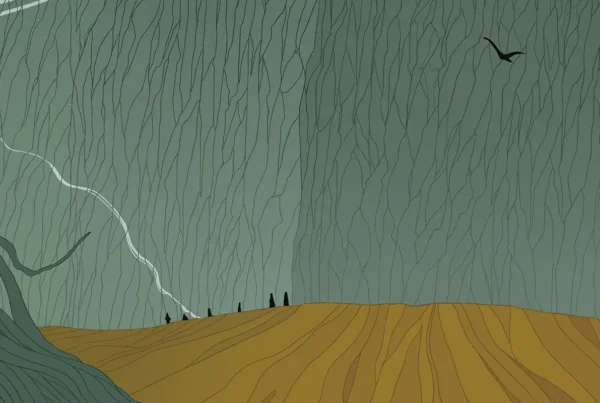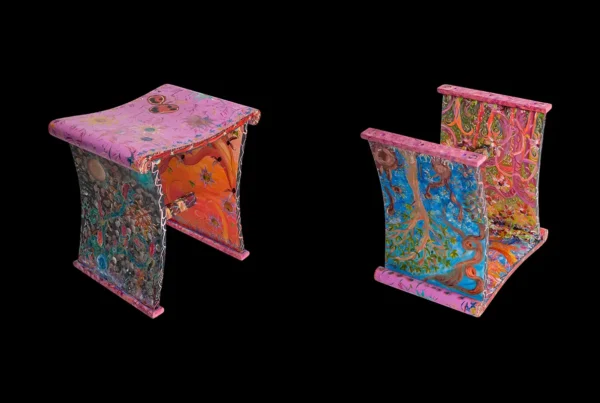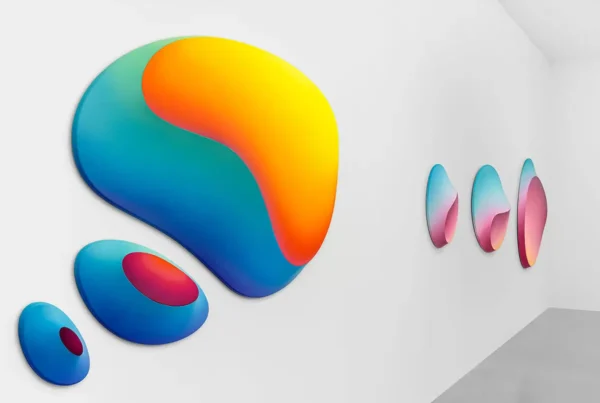“Starting from a photographic shot, Max reaches a metaphotographic work, a three-dimensional piece where the original image acts as the figurative theme.”
A New Dimension of Photography: Sculpting with Light and Space
The story of Max Falsetta Spina’s groundbreaking artistic vision stretches across more than three decades, beginning with an enduring fascination with photography’s immense possibilities. From traditional darkroom experiments to embracing the boundless opportunities of digital innovation, his journey reflects a profound commitment to pushing the boundaries of visual art. In the early 2000s, Falsetta Spina encountered a pivotal moment: he began manually etching lines into polyethylene-coated photographic paper, envisioning photographs not as static images but as objects that could fold and transform into three-dimensional forms. This initial analog experiment set the foundation for what would become an entirely new artistic language—an evolution of photography into sculpture.
The seeds of this innovation matured into what Falsetta Spina eventually named “Parametric Photography.” Rather than capturing the world through a single frame, he began sculpting it, giving physical volume and structure to traditionally flat surfaces. Early processes were painstakingly manual, requiring precise engravings to guide the folds. Yet even at this nascent stage, the idea was revolutionary: a photograph could transcend its two-dimensional origins to become a physical, spatial experience. His methodology mirrored his philosophical desire to break free from mere representation, inviting viewers to experience images as tactile and immersive forms.
Max Falsetta Spina’s ongoing exploration resonated with broader changes in technology and society. As the tools available to artists expanded, so too did his ambition to transform passive observation into active participation. By embracing both the material history of photography and the conceptual freedoms of the digital era, he laid the groundwork for a wholly unique synthesis of mediums—one that challenges audiences to reconsider what a photograph can be, and what it can mean within public and private spaces alike.
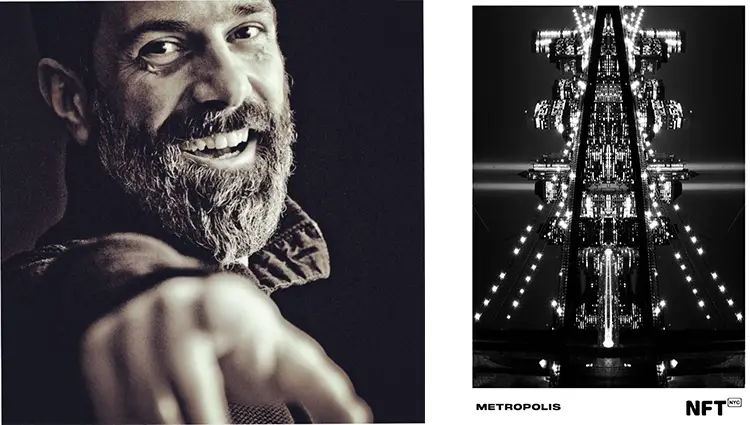
Max Falsetta Spina: Redefining the Intersection of Art, Architecture, and Technology
Parametric Photography, as Falsetta Spina defines it, is an intricate fusion of photography, architecture, sculpture, and digital art, marking a bold reimagining of traditional visual narratives. His creative process is governed by geometric precision and spatial innovation, transforming photographs—often iconic urban landscapes—into complex, folded sculptures. By manipulating images through techniques of symmetry, mirroring, and vector-based editing, Falsetta Spina reconstructs familiar scenes into dynamic forms that defy traditional categorization, bridging the perceived gap between flatness and structure.
Central to Falsetta Spina’s practice is his use of reflective materials, particularly mirror-finish DIBOND® panels. These surfaces not only enhance the sculptural nature of his works but actively integrate their environments into the artwork itself. The reflective quality means that the surroundings—the sky, architecture, and viewers—become integral parts of each piece, creating an ever-evolving visual experience. This interaction is deeply intentional; Falsetta Spina’s work embodies a civic and political philosophy where art fosters unity rather than isolation, encouraging a dialogue between the object, its space, and its audience.
Among his signature pieces, “Metropolis” stands out as a powerful illustration of his philosophy. It transcends its origins as a photograph of New York to become a monumental yet intimate symbol of urban life and connection. Technically, Falsetta Spina balances the analog and the digital with remarkable finesse, moving seamlessly from hand-crafted grooves to digitally designed fold lines and blockchain certification. Each of his sculptures becomes a sophisticated negotiation between craftsmanship and cutting-edge innovation, ensuring that his work remains as enduringly authentic as it is forward-looking.
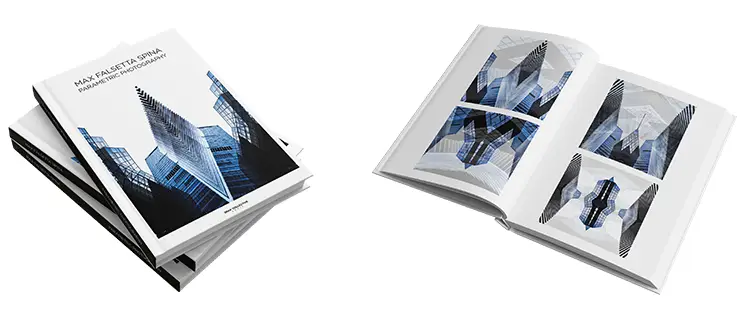
Crafting Urban Myths: The Evolution of “Prospective” and Material Innovation
The evolution of Max Falsetta Spina’s methods was significantly accelerated by the rise of digital technologies. Initially relying on manual drafting tools like compasses and rulers, he later embraced vector graphics to define his complex folding patterns with pinpoint accuracy. This shift not only increased the precision of his designs but opened up vast new creative possibilities. By 2020, Falsetta Spina had fully integrated digital editing into his artistic process, allowing for greater structural sophistication while staying true to his early vision of transforming photographs into living, breathing sculptures.
A landmark moment in Falsetta Spina’s body of work came with the development of “Prospective,” a sweeping photographic series born from a single black-and-white shot taken on the Brooklyn Bridge in 2015. By mirroring the photograph’s diagonals, he created a powerful, symmetrical vision where the city appeared to fold into itself. “Prospective” evolved into an ambitious project spanning 366 images, each exploring the interplay of geometry and space in cities around the world. Through this series, Max not only captured architectural grandeur but also revealed the hidden symmetries that organize urban life, offering viewers a renewed perspective on their surroundings.
Material innovation has always played a crucial role in Max’s progression. His discovery of DIBOND®—a lightweight yet robust composite panel—proved transformative. Particularly attracted to its mirror-finish variety, Falsetta Spina saw an opportunity to deepen his artwork’s interactive quality. Printing photographic compositions onto these reflective surfaces and strategically leaving portions unprinted, he allowed reality itself to seep into his sculptures. Thus, each viewer’s reflection becomes an essential, dynamic element of the piece, ensuring that no two experiences of his work are ever identical.
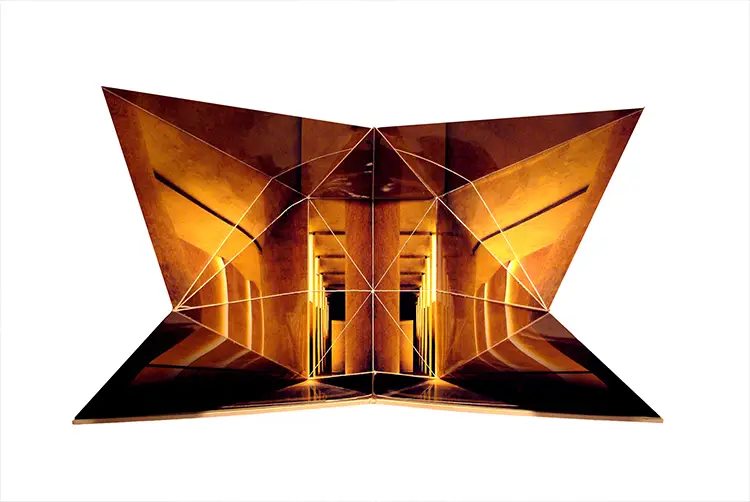
Max Falsetta Spina: NFTs, Public Engagement, and the Living Photograph
Max Falsetta Spina’s adoption of blockchain technology marked another critical phase in his creative evolution. Beginning in 2019, he started certifying his works as NFTs, recognizing the blockchain’s potential for securing authenticity and ownership in a digital era. This move perfectly aligned with his broader artistic ethos—melding traditional craftsmanship with futuristic innovation. By minting both two-dimensional parametric images and full three-dimensional sculptures as NFTs, Falsetta Spina created a seamless bridge between the tangible and the virtual, reinforcing the timeless yet forward-facing nature of his work.
Public engagement plays a pivotal role in the life of Falsetta Spina’s art. His participation in events like NFTNYC has brought his sculptures to vibrant new audiences. Notably, his 2023 presentation of a Times Square piece from “Prospective” introduced digital art collectors and traditional art lovers alike to his unique practice. In 2024, Max pushed boundaries even further with “Homo Ergaster,” a thought-provoking exploration of AI-generated imagery reinterpreted through his signature folding techniques. His upcoming 2025 exhibit in the heart of Times Square, featuring “Metropolis” in both 2D and 3D forms, promises to further blur the lines between art, architecture, and public life.
At the philosophical heart of Max Falsetta Spina’s Parametric Photography is a vision of connection and continual transformation. His sculptures do not merely exist as objects; they live, breathe, and evolve through the people who encounter them. By forging a dynamic interplay between image, space, and observer, he offers a new model for experiencing art—one that invites collective participation, fosters a sense of community, and challenges the static conventions of both photography and sculpture. Through his innovative practice, Falsetta Spina has created not just new artworks, but a new way of seeing.
